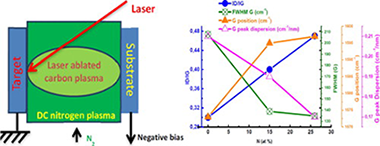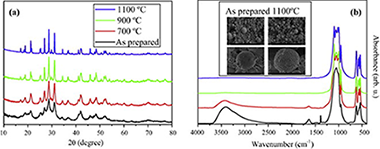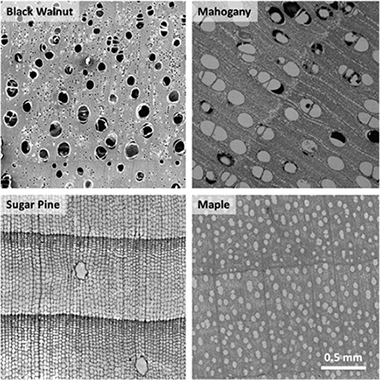Artículos SCI
2015
2015
Materiales Ópticos Multifuncionales
Nanolevitation Phenomena in Real Plane-Parallel Systems Due to the Balance between Casimir and Gravity Forces
Esteso, V; Carretero-Palacios, S; Miguez, HJournal of Physical Chemistry C, 119 (2015) 5663-5670
Show abstract ▽

We report on the theoretical analysis of equilibrium distances in real plane-parallel systems under the influence of Casimir and gravity forces at thermal equilibrium. Due to the balance between these forces, thin films of Teflon, silica, or polystyrene in a single-layer configuration and immersed in glycerol stand over a silicon substrate at certain stable or unstable positions depending on the material and the slab thickness. Hybrid systems containing silica and polystyrene, materials which display Casimir forces and equilibrium distances of opposite nature when considered individually, are analyzed in either bilayer arrangements or as composite systems made of a homogeneous matrix with small inclusions inside. For each configuration, equilibrium distances and their stability can be adjusted by fine-tuning of the volume occupied by each material. We find the specific conditions under which nanolevitation of realistic films should be observed. Our results indicate that thin films of real materials in plane-parallel configurations can be used to control suspension or stiction phenomena at the nanoscale.
Marzo, 2015 | DOI: 10.1021/jp511851z
Materiales Nanoestructurados y Microestructura
High N-content a-C:N films elaborated by femtosecond PLD with plasma assistance
Maddi, C; Donnet, C; Loir, AS; Tite, T; Barnier, V; Rojas, TC; Sanchez-Lopez, JC; Wolski, K; Garrelie, FApplied Surface Science, 332 (2015) 346-353
Show abstract ▽

Amorphous carbon nitride (a-C:N) thin films are a interesting class of carbon-based electrode materials. Therefore, synthesis and characterization of these materials have found lot of interest in environmental analytical microsystems. Herein, we report the nitrogen-doped amorphous carbon thin film elaboration by femtosecond pulsed laser deposition (fs-PLD) both with and without a plasma assistance. The chemical composition and atomic bonding configuration of the films were investigated by multi-wavelength (MW) Raman spectroscopy, X-ray photoelectron spectroscopy (XPS) and electron energy-loss spectroscopy (EELS). The highest nitrogen content, 28 at.%, was obtained with plasma assistance. The I(D)/I(G) ratio and the G peak position increased as a function of nitrogen concentration, whereas the dispersion and full width at half maximum (FWHM) of G peak decreased. This indicates more ordered graphitic like structures in the films both in terms of topological and structural, depending on the nitrogen content. EELS investigations were correlated with MW Raman results. The interpretation of XPS spectra of carbon nitride films remains a challenge. Plasma assisted PLD in the femtosecond regime led to a significant high nitrogen concentration, which is highlighted on the basis of collisional processes in the carbon plasma plume interacting with the nitrogen plasma.
Marzo, 2015 | DOI: 10.1016/j.apsusc.2015.01.123
Materiales Coloidales
Up-conversion in Er3+/Yb3+ co-doped LaPO4 submicron-sized spheres
Garcia-Sevillano, J.; Cantelar, E.; Cusso, F.; Ocana, M.Optical Materials, 41 (2015) 104-107
Show abstract ▽

Er3+/Yb3+ co-doped materials have been extensively used for imaging in biomedical applications using either visible up-converted (UC) or near-infrared (NIR) emissions. The UC spectrum is composed mainly by two Erbium emissions in the green (2H11/2:4S3/2 → 4I15/2) and red (4F9/2 → 4I15/2) spectral range, while the NIR spectrum includes Er3+ (λ ∼ 1.5 μm, 4I13/2 → 4I15/2) and Er3+/Yb3+ (λ ∼ 980 nm, 2F5/2 → 2F7/2(Yb3+):4I11/2 → 4I15/2 (Er3+)) transitions; which relative intensities are dependent on several physical parameters. In the present work, we present the preparation and optical characterization of Er3+/Yb3+ co-doped LaPO4 submicron-sized spheres. The luminescence (CW and pulsed) characteristics, after different post-annealing treatments, are studied. It is found that such treatments strongly increment the emission efficiency, possibly due to the suppression of residual impurities. After calcination at 1100 °C the material behaves as an excellent UC and NIR–NIR wavelength converter.
Marzo, 2015 | DOI: 10.1016/j.optmat.2014.10.022
Materiales de Diseño para la Energía y Medioambiente
Sliding wear resistance of sintered SiC-fiber bonded ceramics
Vera, MC; Ramirez-Rico, J; Martinez-Fernandez, J; Singh, MInternational Journal of Refractory Metals & Hard Materials, 49 (2015) 232-239
Show abstract ▽

Advanced SiC-based ceramics and fiber reinforced composites are interesting materials for a wide variety of applications involving sliding wear conditions because of their excellent thermomechanical properties. The microstructure and wear resistance of sintered SiC fiber bonded ceramics (SA Tyrannohex) were studied. The material is composed of SiC-fibers in two orientations, with polygonal cross sections and cores having higher carbon content than their surroundings, as observed with SEM. A thin layer of C exists between the fibers. This layer has been found to be a turbostratic-layered structure oriented parallel to the fiber surface. XRD shows that the material is highly crystalline and composed mostly of β-SiC. Unlubricated wear behavior of the SA-Tyrannohex material when sliding against a Si3N4 ball in air at room temperature was evaluated. Experiments were performed using a pin on disk apparatus, under different normal loads of 2, 5 and 10 N at sliding speeds of 25, 50, 100 mm/s. A decrease of the friction coefficient with load was found due to the presence of the turbostratic carbon layer between the fibers. Wear rates of the order of 100 mm3/MJ were obtained, independently of sliding speed. Microfracture of the fibers is the main wear mechanism.
Marzo, 2015 | DOI: 10.1016/j.ijrmhm.2014.06.020
Materiales de Diseño para la Energía y Medioambiente
Sliding wear resistance of biomorphic SiC ceramics
Vera, MC; Ramirez-Rico, J; Martinez-Fernandez, J; Singh, MInternational Journal of Refractory Metals & Hard Materials, 49 (2015) 327-333
Show abstract ▽

Biomorphic SiC ceramics were fabricated from four different wood precursors and their Knoop hardness and sliding wear resistance when sliding against a Si3N4 ball in air were studied. Tribological experiments were performed using a pin on disk apparatus, under normal loads of 2 and 5 N, at a sliding speed of 100 mm/s. The effects of specimen porosity and microstructure on measured wear were evaluated. A commercial sintered silicon carbide ceramic was also tested for comparison. Small differences in friction coefficient comparable to monolithic SiC ceramics were obtained. Several concurrent wear mechanisms are taking place: microfracture, plastic deformation in the Si phase and oxidation of the Si and/or SiC phase. The presence of an oxide tribolayer was assessed using fluorescence microscopy. Wear rates were found to scale with SiC content and depend on residual porosity in the composite.
Marzo, 2015 | DOI: 10.1016/j.ijrmhm.2014.07.004
- ‹ anterior
- 253 of 420
- siguiente ›














